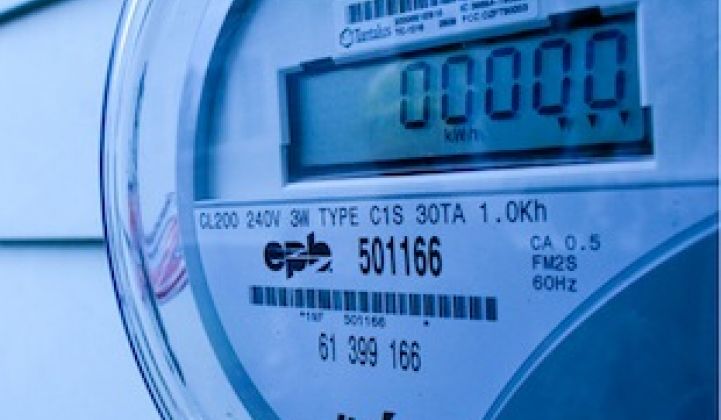Flush with more than $4 billion in stimulus money, the smart meter industry deployed 30 million meters in the two years after the program was passed. That was a big boost. But nationwide, the Federal Energy Regulatory Commission reports that smart meter penetration levels are only at 23 percent.
That's because only a handful of states have dominated the market so far. Take a look at the image below from GTM Research. It shows that a very large swath of the contiguous U.S. -- 28 states -- will have converted less than a quarter of their meters to smarter technologies by next year.

The lag in these states is caused by a number of issues: the lack of coherent policy, the low price of electricity relative to other states, and whether or not utilities have assets that have fully depreciated. For example, many rural cooperatives in the Midwest have adopted automated meter reading technologies, but have not embraced more advanced meters. On the other end of the spectrum, states like California and Texas have very progressive utility commissions, which have spurred wider adoption of smart meters.
"There's still a lot of geographic area left for smart meters," says Zach Pollock, a GTM Research smart grid analyst. "Growth in the future is going to be slower and more incremental, but we're not nearing saturation."
In other words, we're not done yet. Not even close. After big years in 2010 and 2011 due to the stimulus, the smart meter market will normalize in the coming years. (From 2010 to 2012, penetration of smart meters climbed from 8.7 percent to 22.9 percent.)
Even with more moderate growth, the number of smart meters will likely double from 2012 to 2015.



